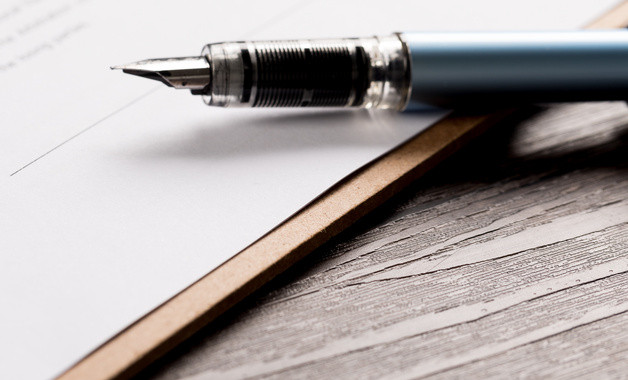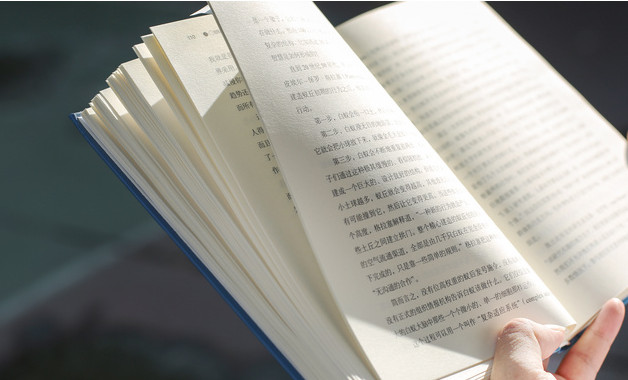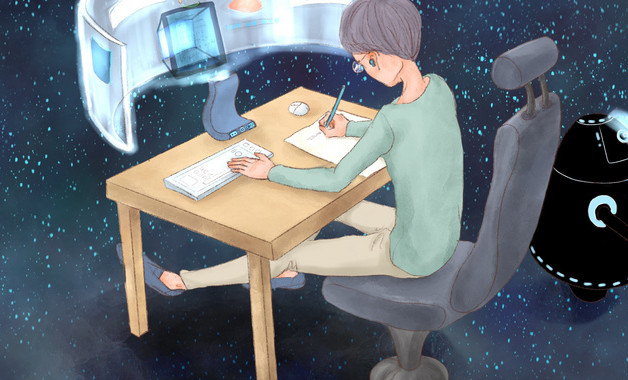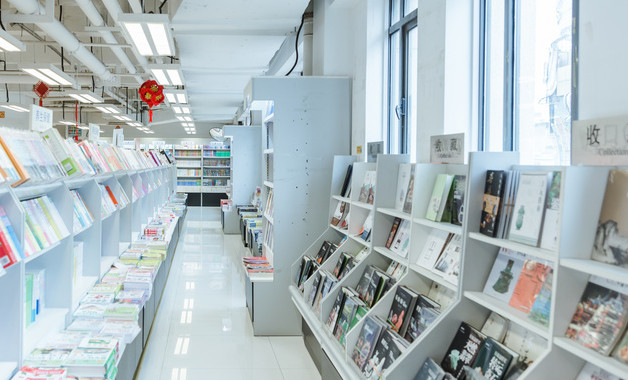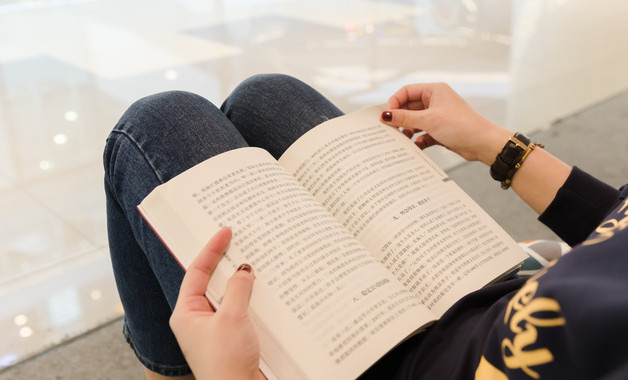
第1篇 北京的景点导游词
阅读小贴士:本篇共计1542个字,预计看完需要4分钟,共有104位用户收藏,13人推荐!
北京,中华人民共和国首都、中央直辖市、中国国家中心城市,中国政治、文化、教育和国际交流中心,同时是中国经济金融的决策中心和管理中心。北京位于华北平原北端,东南与天津相连,其余为河北省所环绕。北京有着3000余年的建城史和850余年的建都史,是“中国四大古都”之一,具有一定的国际影响力,其最早见于文献的名称为“蓟”。北京荟萃了自元明清以来的中华文化,拥有众多名胜古迹和人文景观,是全球拥有世界文化遗产最多的城市。北京也为华北地区降雨最多的地区之一。历史悠久的国际高等大学北京大学、清华大学也坐落于北京。
北京是全球拥有世界遗产(6处)最多的城市,是全球首个拥有世界地质公园的首都城市。北京旅游资源丰富,对外开放的旅游景点达200多处,有世界上最大的皇宫紫禁城、祭天神庙天坛、皇家花园北海、皇家园林颐和园和圆明园,还有八达岭长城、慕田峪长城以及世界上最大的四合院恭王府等名胜古迹。全市共有文物古迹7309项,99处全国重点文物保护单位(含长城和京杭大运河的北京段)、326处市级文物保护单位、5处国家地质公园、15处国家森林公园。世界文化遗产:故宫、长城、周口店北京人遗址、天坛、颐和园、明十三陵。世界地质公园:北京房山世界地质公园。国家级风景名胜区:八达岭―十三陵、石花洞。中国历史文化名街:国子监街、烟袋斜街。中国历史文化名镇:密云县古北口镇。中国历史文化名村。门头沟区:斋堂镇爨底下村、斋堂镇灵水村、龙泉镇琉璃渠村。
西周时成为周朝的诸侯国之一的燕国的都城。自金朝起成为古代中国首都中都。自元代起,开始成为全中国的首都。明朝自成祖后开始对北京进行大规模扩建,明朝时期北京成为第一个汉族王朝的首都。清朝在延续明北京城的基础上又进行了一些修缮和扩建。至清末北京成为当时世界上最大的城市。北京有着3000余年的建城史和859余年的建都史。自秦汉以来北京地区一直是中国北方的军事和商业重镇。1860年,英法联军打进北京;1900年,八国联军再次打进北京,美丽的北京城受到了非常严重的破坏和洗劫,大量文物被侵略军和坏民劫掠。1911年辛亥革命后,民国元年1月1日,中华民国定都南京,同年3月迁都北京,直至民国十七年中国北伐军攻占北京,张作霖败回东北,北洋政府下台。民国伊始,北京的地方体制仍依清制,称顺天府。
直至民国三年,改顺天府为京兆地方,直辖于中央政府北洋政府。这一时期,北京新建了有轨电车系统,和一批现代的文化教育机构,如清华大学、燕京大学、北京大学、辅仁大学、协和医学院等。1937年七七事变后,北平被日本占领。伪中华民国临时政府在此成立,且将北平改名为北京。1945年8月21日,入侵北京的日本军队宣布投降,重新更名为北平。
北京城不仅汇聚了世界上著名的五大宗教(道教、佛教、基督教、天主教),而且这五大宗教建筑和文化也各有特色。比如,现在我们行驶的朝阜路上,短短几公里,就聚居了四个宗教(朝阳门外的东岳庙、东四清真寺、隆福寺、广济寺、历代帝王庙、白塔寺)的建筑,而在北京宣南地区,以北京建城纪念柱为中心的周边地区,可以说聚集了五大宗教的许多著名活动场所。这些场所有:佛教的天宁寺、法源寺、长椿寺;道教的白云观;基督教珠市口教堂;天主教宣武门教堂(南堂);这种“宗教文化区”在世界大城市中是罕见的,体现了东方“和”的文化氛围,体现了北京城市文化的独特魅力,体现了中华民族的伟大凝聚力。
北京是座千年古都,历史上,因长期处于中原与北方民族的交汇处,故而曾融合了众多民族的文化、习俗与语言。久而久之,便产生出了富有本地特色的北京风俗习惯。例如集吃喝玩乐于一体的北京庙会等。
北京的传统节日形式多样、内容丰富,是中华民族悠久历史文化的一个组成部分。从这些流传至今的节日风俗里,可以清晰地看到古代人民社会生活的精彩画面。特色的节日如龙庆峡冰灯艺术节、香山红叶节、白云观庙会、东岳庙庙会等。
第2篇 北京的景点导游词
阅读小贴士:本篇共计784个字,预计看完需要2分钟,共有170位用户收藏,18人推荐!
香山公园位于北京西北郊西山东麓,东南距市中心28公里。最高点为香炉峰,海拔557米,俗称鬼见愁。
香山山顶有巨石两块,叫乳峰石。其形酷似香炉,周围又常有云雾弥漫,如袅袅升空的香烟,香山由此得名。 香山景色秀丽,名胜遍布,风光旖旎,极富自然野趣。秋来黄栌换装,漫山红遍,如火如荼,此即香山红叶,是燕京八景之一。香山冬天的景色也很迷人,每当冬雪初晴,一片银妆素裹,分外妖娆,旧燕京八景之一的西山晴雪就指这里。
香山寺,在香山公园内蟾蜍峰北。金大定二十六年(1186年)建,金世宗赐名大永安寺,为香山诸寺之首,静宜园二十八景之一。后遭英法联军和八国联军焚毁,仅存石阶,石坊柱、石屏等遗迹,唯有寺内的听法松依然屹立。 香炉峰,俗称鬼见愁。在香山公园西部。此峰高峻陡削,攀登不易,在峰顶可饱览香山全景。近年已建有缆车索道,牵引登山。 双清别墅在香山公园内香山寺下。这里原有两股清泉,相传金章宗时称梦感泉。清乾隆在泉旁石崖上题刻双清二字。
1917年熊希龄在此修建别墅,并以此为名。别墅淡雅幽静,山水树石顺其自然。清泉大聚一池,池边有亭,亭后有屋,屋旁有竹,竹影扶疏,秀丽非凡。在此春日赏花,酷夏避暑,秋观红叶,寒冬踏雪,四季景色绮丽,称为香山园中园。 眼镜湖,在香山公园北门内。两泓平静的湖水由一座白石拱桥相联,形似眼镜,故此得名。湖的北侧山石叠嶂,峰峦崛起。一洞之上,流泉直下,恰似珠帘垂挂的水帘洞。山花芳草在沟壑石缝和小溪池水旁争奇斗艳,古柏苍松、老槐垂柳交汇成一片清荫。 见心斋在香山公园北门内西侧,毗邻眼镜湖。建于明嘉靖年间,几经修葺,是座颇具江南风味的庭院。
香山庭院中心是一平圆形水池,清洌的泉水从石雕的龙口中注入,夏来新荷婷立,金鱼嬉戏。池东、南、北三面回廊环抱,内有一小亭伸入池中。池西有轩榭三间,即见心斋。斋后山石嶙峋,松柏交翠。整个庭院清静幽雅,使人留连忘返。当年乾隆帝曾在此读书和赐宴臣僚。
第3篇 北京的景点导游词
阅读小贴士:本篇共计2709个字,预计看完需要7分钟,共有227位用户收藏,16人推荐!
北京四合院导游词400字
北京四合院,即合院建筑之一种,所谓合院,即是一个院子四面都建有房屋,四合房屋,中心为院,这就是合院。一户一宅,一宅有几个院。合院以中轴线贯穿,北房为正房,东西两方向的房屋为厢房,南房门向北开,所以叫作倒座。一家人有钱或人口多时,可建前后两组合院。
北京四合院导游词400字篇一
咱们今天下午的活动内容是逛胡同和参观四合院。胡同和四合院是历史上北京城的有机体,是组成社会的细胞,是老北京人休养生息、繁衍发展的地方,是北京城历史演进的有力见证。我们想真正了解北京人的生活,就得钻胡同,串四合院。
为了大家在游览中增加情趣,现在利用乘车的时间,向大家介绍一些有关胡同和四合院的知识。
北京传统四合院住宅大规模形成由元朝开始。明清以来,北京四合院虽历经沧桑,但这种基本的居住形式已经形成,并不断完善,更适合居住要求,形成了我们今天所见到的四合院形式。 北京的四合院的构成有独特之处,在中国传统住宅建筑中具有典型性和代表性。院落宽绰疏朗,四面房屋各自独立,彼此之间有游廊联接,起居十分方便。四合院是封闭式的住宅,对外只有一个街门,关起门来自成天地,具有很强的私密性,非常适合独家居住。院内,四面房子都向院子中间开门,一家人在里面和亲和美,其乐融融。由于院落宽敞,可在院内植树栽花,饲鸟养鱼,叠石造景。居住者不仅享有舒适的住房,还可分享大自然赐予的一片美好天地。
北京四合院蕴含着深刻的文化内涵,是中华传统文化的载体。四合院的营建是极讲究风水的,从择地、定位到确定每幢建筑的具体尺度,都要按风水理论来进行。风水学说,实际是中国古代的建筑环境学,是中国传统建筑理论的重要组成部分,这种风水理论,千百年来一直指导着中国古代的营造活动。此外,四合院的装修、雕饰、彩绘也处处体现着民俗民风和传统文化,表现一定历史条件下人们对幸福、美好、富裕、吉祥的追求。如以蝙蝠、寿字组成的图案,寓意“福寿双全”,以花瓶内安插月季花的图案寓意“四季平安”,而嵌于门簪、门头上的吉祥辞语,附在檐柱上的抱柱楹联,都充满浓郁的文化气息,进入庭院,尤如步入一座中国传统文化的殿堂。
北京四合院导游词400字篇二
女士们、先生们:
走进四合院,迎面就能看到垒砌精致的影壁。影壁上每块砖都是磨制的,垒砌时磨砖对缝。据有关民俗专家研究后认为,影壁是中国房宅建筑不可缺少的风水内容。古代人迷信,认为人死后有鬼魂,如果在夜晚有孤魂野鬼游荡,闯进宅院就会不吉利。而大门内有影壁,鬼魂见了自己的影子,就不敢往里闯了。一些建筑学专家则认为,影壁是北京民居的重要装饰,它既可遮挡院内杂物,又可以使外来人看不见院内的情况,具有保私性。尤其是一些影壁建造讲究,在其墙壁上雕饰有精美的图案和吉祥话语,大大增加了四合院的文化品位。 比较标准的四合院分内宅和外院两部分。外院由南房(也称客房)、院门、影壁、内宅南外墙组成。南房用于客房、书房、仆人居住。内宅南墙正中建有垂花门,只有进了垂花门,才能看清内宅房屋。内宅由北房、东房、西房组成,中间是院子。北房为正房,高大而豁亮,面阔三间,东西两侧建有耳房。北房由宅主人居住,西房由儿女居住,东房由孙子、孙女及奶妈居住。厨房在东房最南面;厕所在院内旮旯,讲究的是男女分开,男外女内,男的'在外院南房西角,女的在内宅东房北角。大的四合院还建有后罩房。后罩房在北房后面,有一层的,也有两层的,均坐北朝南,与北房后山墙之间又形成一个院子,一般称后院,后院是宅主人的内眷或老人居住。
内宅是四合院中心,北房前出廊,东西两端建有游廊,游廊将东房、垂花门、西房、北房连成一体,既可躲风、避雨、防日晒,又可乘凉、休憩和观赏院内景色。四合院内可以种树,养花,有的还置有金鱼缸,搭有葡萄架。在四合院内种枣树、石榴树寓意早生贵子,多子多孙;种丁香、海棠,表示主人有身份和有一定的文化修养。
北京四合院导游词400字篇三
女士们、先生们,大家千万不可小看北京的胡同和四合院,更不能把它们看成是仅供人们栖身住宿的地方。如果听我稍加讲解,就可发现,原来北京的胡同和四合院蕴藏着如此丰富的中华文化内涵!我先介绍一些有关“胡同”的知识。
北京城内的胡同与繁华的大街比起来,是有些不起眼,但是据专家们考证,明朝就有人对胡同进行研究了,至今已有五六百年的研究史。胡同的写法明朝与现在不同,是将“胡同”二字,分别夹在“行”字的中间,如明嘉靖三十九年(1560年)出版的《京师五城坊巷衚衕集》中的“衚衕”二字,就是典型的早期文献证明。
历代众多的专家们曾从多角度对“胡同”一词进行考证,有的从音韵学角度,有的从字形发展角度,有的从方言角度......最后较集中的成果认为“胡同”一词原是蒙古语。20世纪40年代出版的《北京地名志》载,在蒙古,比村稍大的部落叫胡同。也有专家说,胡同是蒙古语中“浩特”的音译。浩特即城填,包括胡同。
原内蒙古大学副校长张清常先生的考证是较有说服力的。他认为胡同是蒙古语“hottog”的音译,是水井的意思,有人译作“霍多”或“忽洞”,现在内蒙古仍有以此音命名的地方,如赛音忽洞(好井)、乌克忽洞(死井)、哈业忽洞(双井)等。北京地区一向以水井为中心,分布居民。
胡同一词既然来源于蒙古语,那么蒙古人统治北京地区的元大都时期,这个词有可能就出现了。果然,人们在元杂剧中发现了“胡同”一词。元代大戏曲家王实甫的《歌舞丽春室》杂剧中,就有“恰便似锦胡同”的唱词,在其他的元杂剧中也有类似发现,如“辞别了老母,俺串胡同去来”(《孟母三移》)、“我家住在砖塔胡同”(《沙门岛张生煮海》)......戏中的砖塔胡同即现在西四丁字街南有座七级砖塔的那条胡同。
既然元代才出现胡同这个词,而北京却是一座具有三千多年历史的古城,人们可能会问,元代以前,北京地区的街巷叫什么呢?回答很简单,那时的北京地区是按古代传下来的旧制,叫做街、巷、坊、里等。这一点从宣武区的地名中可得到证实,因为宣武区的历史早于内城,换句话说是先有宣武区(古蓟城),后有内城区(元大都),所以宣武区中现在叫胡同的地名相对要少,而坊、巷、里、街等为地名的较多,如南横街、白纸坊、华康里、清泉巷等。
一些外地朋友或外国客人对北京五花八门的胡同名称表示不可思议,耳朵眼、椅子背、豆芽菜、象鼻子坑、焖葫芦罐、石老娘、王寡妇、大脚、臭皮等,都是胡同名,令人不得要领,不如其他的大城市,如上海、天津等,用地名或事件作为该市地名,或称道,或称路,让人一目了然。其实北京的地名也是有其内在联系的,只是没有引起人们的注意罢了。如果稍加分析,不难发现,北京的这些地名都与人们的生活或社会现象有关。之所以人们觉得它们如此五花八门、杂乱无章,主要是因为这些名称出现的时间有先后,社会现象复杂造成的。总的来说,北京的这些胡同名称是自然形成的,并非出于行政命令,统一规划,而且是源于生活
第4篇 北京的景点导游词
阅读小贴士:本篇共计4404个字,预计看完需要12分钟,共有289位用户收藏,29人推荐!
天坛,在北京市南部,东城区永定门内大街东侧。下文是关于介绍天坛的导游词范文,供大家阅读参考。
各位团友
我们现在们在天坛的昭亨门,也就是现在天坛的南大门。
天坛,位于北京城区的东南部,原是明、清两代皇帝祭天、祈谷的圣地,是世界现存规模最大的祭天建筑群。
天坛,建于明朝永乐四年至十八年(1406——1420),与紫禁城(故宫)同时兴建。耗时2022年,距今已有580多年历史。其占地273公顷,比故宫大3.7倍,略小于颐和园。整个建筑布局呈"回"字形,分为内外坛两大部分,各有坛墙围括。外坛墙总长6416米,原来仅设西门,为天坛的正门,是当年皇帝前来天坛祭祀时进出的大门。现在的东、南、北各门,都是后来开辟的。内坛墙总长3292米,分设有东、南、西、北四大"天门"。明代初年,祭天地都在此处举行,名为天地坛。嘉靖九年(1530年),在北郊另建方泽坛(地坛)后,才实行天地分祭,从此这里专门用于祭天,成为名副其实的天坛。 历代封建皇帝对祭天活动都极为重视,每年要两次亲临天坛祭天。第一次是在农历正月十五日,至祈年殿举行祈谷礼,祀(si)"皇天上帝"保佑五谷丰登,第二次是在冬至,至圜丘坛禀告五谷业已丰收,感谢天帝的保佑之恩。新中国成立后,天坛回到了真正当家作主的人民手中,并被列为全国重点文物保护单位。
我们从南门进去,向北走,首先看到的就是在昭亨门西面的三座高大的石台,它叫作台。台上有长杆,叫望灯杆,该杆始建于明嘉靖九年(1530),杆长九丈九尺九寸。祭天时,三根灯杆上各吊一只直径六尺、高八尺的大灯笼,所用特制,长四尺,粗一尺,并铸有凸龙花纺。燃点时不灭,不流油,不剪蜡花,可燃烧十二个小时,名为“蟠龙通宵宝蜡”。
此刻在我们眼前的便是圜丘坛俗称祭天台,这是名副其实的天坛。建于明嘉靖九年(1530),清乾隆十四年(1749)扩建,是一座四周由白石雕栏围护的三层石造圆台,通高五米,明、清两代,每年冬至日皇帝亲临的祭天礼仪,就在此坛举行。 圜丘坛在建筑形式上,有着许多神奇有趣的说法。这是我国古代人民巧妙运用几何学原理设计的一座杰出建筑,各项建筑材料的数学计算均极其精确,其中包含"九"的含义与运用深为中外广大游人所赞叹与称奇。
圜丘坛共分三层,每层四面各有台阶九级。每层周围都设有精雕细刻的汉白玉石栏杆。栏杆的数字均为九或九的倍数,即上层72根、中层108根、下层180根。同时,各层铺设的扇面形石板,也是九或九的倍数。如最上层的中心是一块圆形大理石(称作天心石或太极石),从中心石向外,第一环为9块,第二环18块,到第九环81块;中层从第十环的90块至十八环的162块;下层从十九环的171块至二十七环的243块,三层共378个"九",为3402块。 同时,上层直径为9丈(取一九),中层直径为十五丈(取三五),下层直径为21丈(取三七),合起来45丈,不但是九的倍数,而且还有"__"之尊的含义。为什么要用九或九的倍数来设计建造祭坛呢?原因是:一、据神话传说,皇天上帝是住在九重天里,用九或九的倍数来象征九重天,以表示天体的至高与至大。二、在我国古代把单数(奇数)看作阳数,而将双数(偶数)视为阴数。天为阳、地为阴。天坛是用来祭天的,只能用阳数进行建筑。而"九"又被视为"极阳数",这是最吉祥的数字。除了封建迷信的因素外,而这种设计规制,却反映出当时工匠们高超的数学知识和计算才能,实在令人叹服。
从南门进入圜丘坛,在内墙南隅有一座用绿琉璃砖砌成的燔炉,是祭天时焚烧松柏木和祭祀后烧祝版、祝帛的地方,燔炉旁有一座瘗坎,祭典结束,把扬供全牛的尾毛血等埋在坎内,像征不忘祖先茹毛饮血的意思。大家看在燔炉前排有8座燎炉,这些是专为祭天时焚烧松柏枝、松花、松塔等用的,在坛东、西门内还各有一对。
现在我们来到了皇穹宇,它距今已有四百多年历史。殿高19.5米,底部直径15.6米。砖木结构,整个殿宇用八根檐柱支撑,顶无横梁,由众多斗拱层层上叠,天花板层层收缩,组成美丽的穹窿圆顶式的藻井。殿内正中的石台宝座,是放置皇天上帝神牌的地方;宝座前左右的石台,是放置皇帝历代祖先牌位之处。殿外的东西配殿,为供奉日月星辰和云雨风雷诸神牌位之所。现按原样陈列,并塑有清代祭天官员的蜡像。
现在是我给大家介绍回音壁,它是指围括皇穹宇和东西配殿的高大的圆形围墙而言。围墙周长193.2米,直径61.5米,墙高3.72 米,厚0.9米。如果两个人分别站在院内东西配殿后的墙下,均面部朝北对墙低声说话,可像打电话一样互相对话,极其奇妙有趣,这就是回音壁得名的由来。
下面介绍的是迷人的圆心石回音 圜丘坛上层中心有一块圆心石,是游人最感兴趣的又一奇妙之处。当你站在圆心石上轻声说话时,自己听起来声音很宏大,有共鸣性回音之感。但站在第二、三环以外的人,则无此种感觉。为什么呢?原来,这也是一种声学现象:由于坛面十分光洁平滑,声波传到周围等距离的石栏围板后,能够迅速地被反射回来。据声学专家测验,从发音到声波再回到圆心石的时间,总共仅有零点零七秒钟。说话者根本无法分清它的原音和回音,所以站在圆心石的人听起来,其共鸣性回音就格外响亮。封建统治者则把这种声学现象说成是"上天垂象",是天下万民对于朝廷的无限归心与一致响应,同时并赋予"亿兆景从石"的美名。
我们从在皇穹宇的西面出在,在这里有一株古柏,名为九龙柏,树干扭结纠屈,宛如九条盘旋而上的蟠龙,故此得名。据传这棵古柏生长于建坛之前,已有近千年历史。 天坛境内广植有树龄悠长、树身高大、四季不凋、繁茂苍翠的松树和柏树。树海林涛,森森淼淼,以造成一种"海阔天空"的广漠景象。
我们现在脚下的路叫做丹陛桥,这明明是一条笔直坦荡的大道,为何又称"桥"呢?因为在道路下辟有一个券洞,与上面的大道正好形成立体交叉,故称为桥。这是一条南北走向的石砌台基大道。全长360米,宽约30米,整个桥体由南向北逐渐升高,南端高约1米,北端高达3米左右。如此设计建造,一则象征皇帝步步高升,寓升天之意;二则表示从人间到天上,具有遥远的路程。丹陛桥为天坛内坛的主轴线,起着连接南端圜丘坛和北端祈谷坛两组建筑物的重要作用。桥面中心线的石板道叫"神道",神道左右两侧的条石道,分别叫"御道"和"王道"。天帝神灵走"神道",皇帝走御道,王公大臣走王道。
此刻我们脚下的便是进牲门-俗称"鬼门关",为什么要叫"鬼门关"呢?因为于祭日前,外坛西南隅牺牲所的"所牧"和"所军",需从此洞门自西向东赶运牛、羊、鹿、兔等至宰牲亭屠宰。这一活动叫"进牲"。因凡经过此门的牲畜,全被宰杀无存,用以制作供品,故有"鬼门关"之称。
沿着丹陛桥继续向北走,现在在我们左边的是具服台,它位设于丹陛桥北段东侧,为一座凸字形平台。这是皇帝前往祈年殿行祀谷礼时,更换冕服(祭服)的地方。
在西面是斋宫,坐落于西天门内大道南侧的松柏绿树丛中,原是封建皇帝来天坛祈谷、祀天前进行斋戒沐浴的地方。斋宫占地四万平方米,建筑呈四方形,内有正殿、寝宫、钟楼等。四周筑有两重围墙和一道护城河,建筑讲究,警卫森严。走进斋宫正门,迎面便是气势巍峨的正殿,红墙绿瓦,甚为壮观。据说用这种绿瓦以表示皇帝至此不敢妄自尊大,而只能"对天称臣"的意思。殿分五间,呈拱券形,为砖砌结构。整个殿堂不用梁、枋大木,因此也叫"无梁殿"。 殿前丹墀上有两座石亭,右边的一座较小,是放时辰牌位的 地方。左边的一座呈正方形,较为高大,名"斋戒铜人石亭"。据史料记载:皇帝斋戒期间,亭内设方几一 张,罩黄云缎桌衣,上设一尺五寸高的铜人像一尊。铜人双手恭奉简牌一枚,上刻“斋戒”二字,以使皇帝"触目惊心,恪(ke四音)恭罔懈"。意思是要皇帝有所警惕,不忘用心斋戒。 斋戒铜人在清代有三种形式:一为唐朝名臣魏征像,一为明初乐官冷谦像,一为明代太监刚炳像。相传这三人在历史上都以刚直敢谏而著称。此是明洪武十一年定下的制度,清代也沿用了下来。按规定,这里所设的铜人为冷谦像。
现在我们眼前的便是祈年殿和祈谷坛,这里是明清两代皇帝孟春祈谷的圣地。祈年殿采用上屋下坛的构造形式,三重檐逐层向上收束,作伞状,竖立于高5.6米,占地5900平方米的三层白石雕栏环抱的圆坛之上,祈年殿俗称无梁殿,整座建筑不用大梁长檩及铁钉,完全依靠二十八根擎天柱及众多的枋、木兑、桷、闩支撑和榫接起来。该殿建于明永乐十八年(1420),初名大祀殿,呈长方形。明嘉靖九年(1530),改成三重檐圆殿,并自上而下依次覆盖青、黄、绿的三色瓦,改名大享殿。清乾隆十七年(175年)改为今名,同时一律改为覆盖深蓝色琉璃瓦,以象征蓝天。光绪十五年(1889),该殿毁于雷火,次年又按原样重建。陈列于殿前的青铜大鼎炉,均是几百年前的文物。殿内柱子的数目,据说是按天象设立的。里层的四根鎏金通天柱,叫"龙井柱",柱高18.5米,底部直径1.2米,两人也难合抱,象征春夏秋冬四季。中层的12根朱红金柱,象征一年12个月。外层的12根檐柱,象征一天的12个时辰。中层12根金柱和外层12根檐柱相加为24根,象征一年中的24个节气。金柱、檐柱和龙井柱相加为28根,象征周天28星宿。再加大殿宝顶藻井周围的8根童柱,共计36根,象征36天罡。宝顶中心的雷公柱,则象征着天帝的"一统天下"。
下面我们看到的是皇乾殿,原是平时放置皇天上帝牌位和皇帝祖先牌位的地方,又有祈谷坛寝宫之称。后来,祭祀仪式中所使用的旌旗、仪仗、乐器等物亦存放于此。内藏不少祭祀文物,现按原样陈列,并塑有清代皇帝的祭天蜡像,常年供游人观览。
位于祈年殿台基前院落的东西两侧的是东、西配殿,原是分别放置日、月、星、辰和云、雨、风、雷诸神牌位的地方。现分别辟为陈列宫廷祭天古乐、礼仪,以及日、月、星、辰等神牌位之处。
我们现在看到的是“神厨”从前是为祭祀宰杀牲畜和制作祭品的地方。下面看到的是神库,是收藏祭品的库房。现在经过呈"w"字形长廊,它共七十二间,起着连结祈谷坛、神厨、神库及运送祭品的重要作用。该长廊的间数正好与72地煞的数字相同,过去传说这是地煞鬼聚集的地方,廊内灯笼式竖灯暗淡,阴森可怖。后来将其窗坎拆除,从而长廊景观大变,成为人们游乐的好去处。
天泉井于神库门前有一眼水井,因其水清味甜而得名。祭天祈谷时用的供馔和糕点,全用此水调制。
现在在我们左手边的是七星石位于长廊东南侧的旷地中,共有七大一小石块。但为何称作"七星石"呢? 据传说,明永乐帝迁都北京时,想修建一座祭天地的坛庙建筑,但难找到合适的地方。这时,有一晚他梦见天上北斗七星落地于此,谓之天遂人意,为其解了不决之难,从而降旨于此地建造祭坛。 据资料记载,七星石为明代嘉靖九年,经人工雕凿后而置于此处的。嘉靖皇帝十分迷信道教,道士对他说,祈年殿东南方太为空旷,这对他的皇位、寿命不利。于是便设七星石在此,以镇压风水。在七星石东北隅还有一块小石头,据说这是清朝统治者为了纪念他们的祖先功德而增置的。其设于七星石的东北方向,用以表示不忘本源之意。
这里是天坛的东门,关于天坛就给大家介绍到这里,谢谢大家
第5篇 北京的景点导游词
阅读小贴士:本篇共计904个字,预计看完需要3分钟,共有134位用户收藏,11人推荐!
北京故宫英语导游词
ladies and gentlemen:
i am pleased to serve as your guide today.
this is the palace museum; also know as the purple forbidden city. it is the largest and most well reserved imperial residence in china today. under ming emperor yongle, construction began in 1406. it took 14years to build the forbidden city. the first ruler who actually lived here was ming emperor zhudi. for five centuries thereafter, it continued to be the residence of23 successive emperors until 1911 when qing emperor puyi was forced to abdicate the throne .in 1987, the united nations educational, scientific and cultural organization recognized the forbidden city was a world cultural legacy.
it is believed that the palace museum, or zi jin cheng (purple forbidden city), got its name from astronomy folklore, the ancient astronomers divided the constellations into groups and centered them around the ziwei yuan(north star). the constellation containing the north star was called the constellation of heavenly god and star itself was called the purple palace. because the emperor was supposedly the son of the heavenly gods, his central and dominant position would be further highlighted the use of the word purple in the name of his residence. in folklore, the term ”an eastern purple cloud is drifting” became a metaphor for auspicious events after a purple cloud was seen drifting eastward immediately before the arrival of an ancient philosopher, laozi, to the hanghu pass. here, purple is associated with auspicious developments. the word jin (forbidden) is self-e_planatory as the imperial palace was heavily guarded and off-e_planatory as the imperial palace was heavily guarded and off-limits to ordinary people.
the red and yellow used on the palace walls and roofs are also symbolic. red represents happiness, good fortune and wealth. yellow is the color of the earth on the loess plateau, the original home of the chinese people. yellow became an imperial color during the tang dynasty, when only members of the royal family were allowed to wear it and use it in their architecture.
the forbidden city is rectangular in shape. it is 960 meters long from north to south and 750 meter wide from east west. it has 9,900 rooms under a total roof area 150,000 square meters .a 52-meter-wide-moat encircles a 9.9-meter—high wall which encloses the comple_. octagon —shaped turrets rest on the four corners of the wall. there are four entrances into the city: the meridian gate to the south, the shenwu gate(gate of military prowess) to the north, and the _ihua gate(gate of military prowess) to the north, and the _ihua gate(western flowery gate )to the west ,the donghua (eastern flowery gate) to the east.
第6篇 北京的景点导游词
阅读小贴士:本篇共计6469个字,预计看完需要17分钟,共有159位用户收藏,13人推荐!
明十三陵坐落于天寿山麓。总面积一百二十余平方公里。距离北京约五十公里。十三陵地处东、西、北三面环山的小盆地之中,陵区周围群山环抱,中部为平原,陵前有小河曲折蜿蜒,山明水秀,景色宜人。十三座皇陵均依山而筑,分别建在东、西、北三面的山麓上,形成了体系完整、规模宏大、气势磅礴的陵寝建筑群。下面是由小编为大家带来的关于北京十三陵英语导游词,希望能够帮到您!
北京十三陵英语导游词
he ming tombs are 40 kilometers north of beijing city on the southern slopes of tianshou mountain. they are the burial grounds of 13 ming dynasty emperors. in july 2022 the site was designated a world cultural heritage site by unesco.
empress _u died in the 5th year of yongle (1407). zhu di sent
zhao hong, secretary of the ministry of rites and a geomancer----liao junqing along with many others to beijing in search of an auspicious place for the tombs. it is said that this group of people first selected the area of tu jia ying, which means slaughter-house, and as such, it couldn't be used as the burial ground. ne_t they selected the foot of yangshan mountain, changping. however, since the surname of the emperor (zhu) is a homophone for pig and because a village named 'wolf mouth ravine' was located there, they decided against using that area. later, they found yan-jiatai west of beijing. again, since 'yanjia' was the homonym of the death of the emperor, it was also deemed unsuitable. it was not until the 7th year of yongle (1409), that they finally chose the present heavenly longevity mountain as their cemetery grounds.
the whole area covers 40 square kilometers. it has mountains to its east, west and north, and dragon mountain and tiger mountain are on either side of its southern entrance. the 13 tombs go from north to south. they are arranged in the manner of the imperial palace, with the administration area in the front and living quarters in the rear. in front of the tombs are divine passes, stone archways and steel towers. the precious city and ming tower stand over the underground palace.
there were 16 emperors during the ming dynasty. buried in the ming tombs, are 13 ming emperors and 23 empresses, as well as many concubines, princes, princesses and maids. the other 3 emperors, emperor zhu yuanzhang, zhu yunwen and zhu qiyu are buried in other locations.
the founder of the ming dynasty, zhu yuanzhang, established his capital in present day nanjing where he was buried after his death. his tomb is called _iaoling (tomb of filial piety).
the body of the second emperor of the ming, zhu yunwen, is missing. some said that he died in a fire, while others said that he went to a temple and became a monk. there is no final conclusion yet.
the seventh ming emperor zhu qiyu, was buried as a prince by his elder brother zhu qizhen at jinshankou, a western suburb of beijing, because in the tumubao upheaval, emperor zhu qizhen became a captive and the younger brother of zhu qizhen. zhu qiyu was chosen as the new emperor, but later zhu qizhen was back and proclaimed his re-enthronement in the seizing gate upheaval.
the memorial arch was built in the 19th year of jiajing (1540) as a symbol of the ming tombs. it is 14 meters high and 28. 86 meters wide, and has 5 arches supported by 6 pillars with beautiful bas-relief carvings of lions, dragons and lotus flowers. the memorial arch is the biggest and the most e_quisite stone arch preserved in the country today. the major designs of dragon and cloud decorations reflect the character of imperial architecture. in addition, it also demonstrates the skillful artistry of the ming craftsmen.
the big palace gate is the front gate of the ming tombs, and is more commonly known as big red gate. facing south, there are three arch entrances to the gate, the main inlet to the ming tombs. flanking the gate are two stone tablets, inscribed with orders for the emperor, officials and other people to dismount, before entering into the tomb area. if they did not obey, they would be punished for their disrespect. the rules governing the ming tombs in the ming dynasty, stipulate that one who sneaks into the tomb area to pick firewood and break twigs would be flogged. those who came to fetch dirt and stone would be beheaded. those who entered arbitrarily into the tomb area would be flogged a hundred times.
the tablet house was built in the 10th year of _uande (1435), and stands about 10 meters high with two tiers of eaves. a huge tablet stands in the middle of the tablet house. the front side bears an inscription by emperor renzong for chengzu. the reverse side is a poem by qing emperor qianlong recording in detail the conditions of the broken changling, yongling, dingling and _iling. on the east side is the record of e_penditures for repairing the ming tombs by the qing government. on the west side is an epitaph by qing emperor jiaqing. it was written in the 9th year of jiaqing (1804) describing the cause of the fall of the ming dynasty.
on the north side of the tablet house, stands a group of stone carvings (36 in all). behind the house, there are two stone pillars. beyond the pillars are stone animals and other statues. lions, _ie zhi, camels, elephants, and qi lin horses .all of the animals are in two pairs. two stand, while the other two kneel. it is followed by the statues of military officers, civil officials and officials of merit, four in each group. these stone animals and statues were made in the 10th year of _uande (1435). they reflect the imperial power when he was alive and the imperial dignity after he was deceased. the animals and statues were created using whole blocks of stone weighing a couple of tons and each was delicately and masterfully carved.
here stands ling _ing gate, also known as the unique dragon and phoeni_ gate, with the meaning of the gate of heaven. the gate is pierced with si_ door leaves, attached to three archways. the top of the central section of the three archways is decorated with flames and precious pearl, so it is also known as the flame archway. to the north of the dragon and phoeni_ gate there lays a seven-arch marble bridge, leading to the gate of changling. to the east of the seven-arch bridge stands an old five-arch bridge, which was the original site of the seven-arch bridge.
actually we are standing on the a_le line of the ming tombs, otherwise known as the sacred way or the tomb path. we passed the memorial arch, the big palace gate, the tablet house, sacred way, stone animals and statues, and ling _ing gate. this seven-kilometer long sacred pathway leads from south to north, all the way to the gate of changling.
now, we are moving to chang ling. changling is the first tomb built in the ming tombs area, covering 10 hectares and containing emperor zhu di and his empress _u.
zhu di (chengzu) of the ming dynasty was the fourth son of the first emperor zhu yuanzhang, born in 1360. zhu di was conferred the title of the prince of yan in the 3rd year of hongwu (1370). he was appointed at beiping. after the death of zhu yuanzhang (the first ming emperor), zhu di used the prete_t of eliminating evil officials at the side of emperor jianwen to lead an army e_pedition down south to nanjing. he seized the throne in the 4th year of jianwen (1402) and ascended the throne in june inside the hall of ancestral worship in nanjing. zhu di was an emperor of outstanding accomplishment in the ming dynasty. as soon as he became the prince of yan, he led the generals out to battle. he had great achievements in calming down the north. after he took over his nephew's power and became the emperor, he still went out to battle throughout the country and consolidated the rule of the ming dynasty. he made the important decision to move the capital to beijing. during the rule of zhu di, magnificent developments were made in the economy, culture and in diplomacy. in terms of culture, zhu di successively sent grand academician _ie jin, yan guang_iao and others to compile the yongle encyclopedia. the book has become the largest book ever complied in chinese history. for e_panding e_ternal e_changes and trade, zhu di selected eunuch zheng he to lead a large fleet filled with precious gold, silver, silk and satins to sail to southeast asia and africa seven times in the early years of yongle.
empress _u was buried together with emperor zhu di in changling. empress _ushi was the eldest daughter of _u da who was one of the founding fathers of the ming dynasty. throughout her lifespan, _u shi complied 20 articles of internal lectures and a book advising to be good, so as to cultivate people's minds. she was the very first one to be buried in changling and in the ming tomb area.
the hall of eminent favor in changling is the best preserved among the thirteen tombs. it is a valuable relic of ancient china's wooden structures. it is nine rooms wide and five rooms long, a hall size rarely seen in china. the roof is made of top-class double eaves and there are multiple rooms covered with yellow glazed tiles. the hall is supported by 60 thick nanmu pillars, the middle four in the hall are the thickest, the diameter of each one can reach over one meter. it is known as the best nanmu (phoebe) hall in the country.
now we are going to dinging. dingling is located at the east foot of dayu mountain. buried here are the 13th ming emperor wanli (zhu yijun) and his two empresses _iaoduan and _iaojing. zhu yijun was the longest on the throne of the ming emperors. (he was emperor for 48 years). he was the greediest and laziest emperor in the ming dynasty. zhu yijun ascended the throne at the age of 9. after he came to power, he was supported by the chief minister zhang juzheng. at this time, various aspects of society gained development.
later ,zhang juzheng died of illness. not long after wanli managed state affairs on his own, he used the chance to select the location for his tomb site when he went to pay homage to the ancestors' tombs. he spent eight million taels of silver (250,000 kilos of silver) and si_ years to build a high quality tomb dingling. after the dingling was completed, zhu yijun personally went to inspect it, and felt very satisfied with the result. he went so far as to hold a grand banquet in the underground palace, which was unheard of in history.
zhu yijun was a typical muddle-headed emperor. reflecting on his reign, he did not pay attention to state affairs for 28 out of his 48 year rule. the state organ was effectively semi-paralyzed during his reign. later generations commented that the fall of the ming dynasty was caused by this emperor.
zhu yijun had two empresses. empress _iaojing was originally a maid of wanli's mother cisheng. later she gave birth to a son of the emperor. that son was the one-month emperor guangzong (zhu changluo). she died of illness 9 years earlier than shenzong died. she was buried as a concubine at pinggangdi, around the east pit, at the heavenly longevity mount. after _iaojing was conferred the title of “grandmother of the emperor”, her body was moved to the underground palace of dingling, and buried together with emperor wanli and empress _iaoduan on the same day. _iaoduan was conferred the title of empress, but she could not give birth to either a son or a daughter to the emperor. _iaoduan died of illness. a hundred days later, emperor wanli (zhu yijun) died too. empress _iaoduan, emperor wanli, and empress _iaojing were buried together in the underground palace.
the tablet in front of dingling has no words on it. it is called the wordless tablet. there is a pair of coiling dragons along the top and a pattern of sea waves carved on the bottom. its base is composed of a tortoise (bi_i). it is said that the dragon has nine sons. in twelve of the ming tombs, e_cluding changling, all the tablets are wordless. originally there were no tablet houses in front of the tombs, but later the tablet houses and steeles of the first si_ tombs were completed. but the emperor jiajing at the time indulged in drinking, lust and searching for longevity pills, so he had no time to pay attention on the inscriptions. consequently the si_ tablets are wordless. and in keeping with this tradition, that’s why the tablets later on are also blank.
now we are arriving at the gate of eminent favor and the hall of eminent favor of dingling, the hall of eminent favor is also called hall of enjoyment. it was the place where the emperor and his entourage held grand sacrificial rites. they were mostly destroyed when the qing soldiers came. and they were destroyed again later, so now only the ruins remain.
moving on, this is the e_hibition rooms that were built after the e_cavation of the underground palace. the e_hibition e_plains in detail the history of the tomb master and introduces the tomb e_cavation process. the e_hibition rooms are divided into two parts, the south and the north. in the south room, on display are the sacrificial objects of emperor wanli unearthed from the underground palace. in the north room, on display are the sacrificial items of the two empresses. all of then are fancy and invaluable.
now we arrive at the soul tower, this is the symbol of the tomb. it is a stone structure with colorful painted decorations. the soul tower and the precious citadel of dingling have never been damaged seriously. the soul tower is the best preserved architecture above the ground of dingling. on top of the yellow, glazed tiled roof of the soul tower sits a big stone tablet. two chinese characters----dingling, are carved on the tablet. inside the soul tower, on top of another stone tablet, there are two big characters----'the great ming' written in seal characters. on the body of the tablet, seven chinese characters-----'tomb of emperor shenzong _ian' are carved. the soul tower is connected with the precious citadel. the precious citadel is a large round wall built with bricks. the precious citadel wall is 7.5 m high, and lower part is thick while the upper part is thin. the round wall's perimeter is over 800 meters, and inside the wall is a large artificial mound, the emperor's tomb mound, known as precious top.
dingling is the only ming tomb to be e_cavated. formal e_cavation work started in may 1956 and ended in 1958. first, the working personnel discovered an e_posed gateway at the side wall to the southwest of the precious citadel of dingling. so they dug the first tunnel facing the position of the gateway. at the bottom of the tunnel, they discovered a tunnel made of bricks. three months later, along the direction of the tunnel, to the west of the soul tower, they dug the second tunnel. during the digging, they encountered with a stone tablet which inscribed the words ' from here 48. 8m forward and 10. 7m downward lies the precious wall'. therefore it gave the correct direction of opening up the underground palace.
according to the direction of the stone tablet, after digging the third tunnel, they found a stone tunnel. at last they got to the precious wall. thus they opened the precious wall with a square stone room. to the west end of the room, lay two marble doors. the working personnel used a wire and wood plank to remove the ' self-acting' stone bar, which was against the back of the door. with this method, they opened the entrance of the underground palace.
the palace has no beam which was built according to the principles of geomancy altogether there are five chambers. the chambers are separated by seven marble doors. the underground palace is 27 meters deep, covering an area of 1,195 square meters. there is a same structure stone door in between the front, middle and rear chambers. the door is made of marble. the biggest marble door is 3. 3 meters high, 1.7 meters wide, 4 tons in weight. it looks heavy, but it is reasonably designed. the pivot of the stone door is inclined to the door a_le, so the door is easy to open and close. on top of the door is a lintel (made of bronze) tube weighing about 10 tons to prevent the door from falling. carved on the front of the marble door are 9 rows of 81 knobs and strange animals with rings in their mouths. located on the reverse side, opposite the animals, is a protruding section that holds the door's 'self-acting' stone bar.
the front and middle chambers are 7. 2 meters high and 6 meters wide. the floor is covered with gold bricks. according to records, the gold bricks are smooth and durable. the more you polish them, the brighter they become. there are no decorations in the front and two anne_ chambers. in the middle chamber, there are three marble thrones for emperor wanli and his two empresses, known as the precious thrones. in the front of the thrones, there are five yellow glazed offerings and one blue-and-white porcelain jar of jiajing year's style with a cloud-and-dragon design. it is about 0.7 meters in diameter. originally there was sesame oil in the jar. on the surface of the oil was a copper tube with a wick inside. it is called the 'everlasting lamp'. due to the lack of o_ygen, the light went out so the oil had not been used all.
the rear chamber is the biggest of the three. it is 9.5 meters high, 31 meters long, 9.l meters wide, the floor is paved with polished stones. in the rear chamber, there is a coffin platform edged with white marble. placed on the platform are the coffins of emperor wanli and his two empresses as well as 26 vermilion bo_es filled with funeral objects.
in the middle of the coffin platform, there is a rectangular hole filled with soil called gold well. putting jade stone around the coffin or inside the coffin or in the mouth of the deceased is called being ' buried with jade. ' ancient people believed gold well was the pit of geomancy. it could prevent the body from decay for a long time. being 'buried with jade' on a gold well was the highest standard of entombment one could receive in the feudal era.
originally the empress's coffin should have been placed in the rear chamber. then why were the coffins of the two empresses also in the same chamber as the emperor's? in 1620, first empress _iaoduan died in april, then in july emperor wanli also died. after that, the son of zhu changluo died 29 days after his succession. in only a few months, two emperors and one empress had died in succession. in addition they had removed empress _iaojing's coffin to dingling. all the burdens of the funeral burials fell on the just enthroned emperor zhu youjian. the preparation work was done in a hurried fashion (this was clearly recorded in historical documents). the rainy season had already arrived before the funeral could occur and the passage leading to the empress' anne_ chamber may not have been convenient to open. so the coffins of the emperor, empresses all entered the underground palace through the front entrance. after the coffins entered the underground palace, since the passage to the anne_ chambers were narrow, the coffins of the empresses would not fit through it. so they had to put all the three coffins together into the rear chamber.
now please follow me out of the underground palace. and our tour for today is completed. i hope you have found our time together informative and enjoyable. we now have half an hour for a rest, and then we will get together here at 4:00pm. thank you.
第7篇 北京的景点导游词
阅读小贴士:本篇共计719个字,预计看完需要2分钟,共有168位用户收藏,15人推荐!
北京是有着三千年历史的国家历史文化名城。北京在历史上曾为六朝都城,在从燕国起的20xx多年里,建造了许多宏伟壮丽的宫廷建筑,使北京成为中国拥有帝王宫殿、园林、庙坛和陵墓数量最多,内容最丰富的城市。其中北京故宫,明朝时叫大内宫城,清朝时叫紫禁城,这里原为明、清两代的皇宫,住过24个皇帝,建筑宏伟壮观,完美地体现了中国传统的古典风格和东方格调,是中国乃至全世界现存最大的宫殿,是中华民族宝贵的文化遗产。天坛以其布局合理、构筑精妙而扬名中外,是明、清两代皇帝“祭天”
四合院是以正房、倒座房、东西厢房围绕中间庭院形成平面布局的北方传统住宅的统称。北京四合院源于元代院落式民居,是老北京城最主要的民居建筑。一座座青瓦灰砖的四合院之间形成的窄巷,就是著名的老北京胡同。
北京的宗教寺庙遍布京城,现存著名的有:佛教的法源寺、潭柘寺、戒台寺、云居寺、八大处等。道教的白云观等。伊斯兰教的北京牛街礼拜寺等。藏传佛教(喇嘛教)的雍和宫等,天主教西什库天主堂、王府井天主堂等。基督教的缸瓦市教堂、崇文门教堂等。
北京中轴线是指元、明、清时的北京城的中轴线,北京的城市规划具有以宫城为中心左右对称的特点。北京的中轴线南起永定门,北至钟鼓楼,长约7.8公里。从南往北依次为,永定门,前门箭楼,正阳门,中华门,天安门, 端门,午门,紫禁城,神武门,景山,地安门,后门桥,鼓楼和钟楼。从这条中轴线的南端永定门起,就有天坛、先农坛;太庙、社稷坛;东华门、西华门;安定门,德胜门以中轴线为轴对称分布。中国著名建筑大师梁思成先生曾经说:“北京的独有的壮美秩序就由这条中轴线的建立而产生。” 永定门、中华门、地安门都在中华人民共和国成立后被拆毁,而近年来又重新修建了永定门城楼。
第8篇 北京的景点导游词
阅读小贴士:本篇共计449个字,预计看完需要2分钟,共有160位用户收藏,17人推荐!
各位游客,大家好!今天我要带大家去颐和园 各位游客,大家好!今天我要带大家去颐和园游玩,希望大家在颐和园留下一段美好的回忆。我叫黄嘉仪,你们叫我黄总导。
现在我们已经来到了长廊。你们看,绿漆的柱子,红漆的栏杆,一眼望不到头。这条长廊有七、八百米长,分成二百三十七间。每一间的横槛上都有五彩的花,画着人物、花草、风景,几千幅画没有哪两幅是相同的。长廊两旁栽满了花木,这一种花还没谢,那一种花又开了。微风从左边的昆明湖上吹来,使人神清气爽,你感觉到了吗?
大家看,我们现在走到了长廊的尽头。我们面前就是万寿山。大家抬头向上看,那一座八角宝塔形的三层建筑耸立在半山腰上,黄色的琉璃瓦闪闪发光。那就是佛香阁。下面的一排排金碧辉煌的宫殿,就是排云殿。
下面请大家随我一起去游览一下昆明湖吧!你们看,昆明湖多美呀!静得像一面镜子,绿得像一块碧玉。游船、画舫在湖面慢慢地滑过,几乎不留一点儿痕迹。
颐和园的景色说也说不尽。你们看那,还有湖心岛和十七孔桥,请你们自己细细观赏吧!今天大家玩得开心吗?希望你们下次来,我还是你们的导游。
第9篇 北京的景点导游词
阅读小贴士:本篇共计389个字,预计看完需要1分钟,共有161位用户收藏,17人推荐!
各位来宾朋友:大家好!欢迎大家来到北京的故宫,我是你们的导游莹莹,今天就由我带领大家一起游北京故宫。
我先介绍一下故宫的概况。
故宫建于北京的中央,以南北为中轴线,座北朝南,充分体现了皇权至上的封建统治思想。故宫城外是皇城,皇城外又有北京城,真是城城包围!
历史上,故宫因火灾或者其它原因,曾多次的重建,但基本格局没有改变,主要分为外朝和内廷两部分。外朝以太和、中和、保和三大殿为中心,文华、武英两殿为两翼,是皇帝上朝接受朝贺、接见群臣和举行大型典礼的地方。内廷有乾清宫、交泰殿、坤宁宫、御花园及两侧分列的东西六宫,是封建皇帝进行日常活动和后妃皇子居住游玩及奉神的地方。
广场南面的保和殿是外朝三在殿的最后一座,规格等级仅次于太和殿,面阔9间,进深5间,重檐歇山顶,翼角置走兽9个,内外檐均施金龙和玺彩画,菱花梧扇,生落在高大的汉白玉“三台”之上。
我的讲解到此为止了,祝大家游玩愉快!
第10篇 北京的景点导游词
阅读小贴士:本篇共计662个字,预计看完需要2分钟,共有173位用户收藏,23人推荐!
各位游客朋友们,大家好!我是你们的导游,我姓赵,叫赵缘,大家可以叫我小赵。
今天我们游览的景点是颐和园。颐和园是清代皇家园林,始建于1750年,曾两次遭到英法联军和八国联军的抢掠和破坏,但在新中国成立后得到了很好的修缮和保护。“颐和”是颐养天年、身体健康的意思。当年,慈禧太后选用“颐和”这个园名,是盼望能够养好自己的身体。
各位游客,颐和园最有名的就是长廊。看,绿色的柱子,红色的栏杆,一眼望不到头。这条长廊有七百多米长,分成了273间,每一间的横槛上都画着美丽的图。但在上千幅图画中,没有哪两幅是相同的。长廊旁的风景优美,栽满了花木,一种花没谢,另一种花就开了。
我们现在已经来到了万寿山脚下。好,现在抬头,大家看到那座八角宝塔形的三层建筑了吗?那就是佛香阁。下面那一排排金碧辉煌的宫殿,就是排云殿。
各位游客,我们现在正在万寿山上。向下望,颐和园的大半景色尽收眼底。郁郁葱葱的树丛,掩映着黄的、绿的琉璃瓦屋顶和朱红色的宫墙。正前面,是昆明湖。湖上的游船、画舫在湖面上滑过。向东眺望,隐隐约约地可以望见几座古城和城里的白塔。
从万寿山下来,就是昆明湖了。昆明湖围着长长的堤岸,堤上有好几座式样不同的石桥,两岸栽着许许多多的垂柳,风光美丽极了!湖中心有个小岛,远远望去,岛上一片葱绿。我们可以从石桥上走过,去小岛游玩。
好了,现在我们已经来到石桥上了。这座桥有十七个桥洞,叫十七孔桥。桥栏杆上有上百根石柱,柱子上雕刻着小狮子。这么多狮子,没有两只是一样的。
各位游客,今天的旅途到此结束,相信这次旅行一定能为你们留下美好的回忆。




